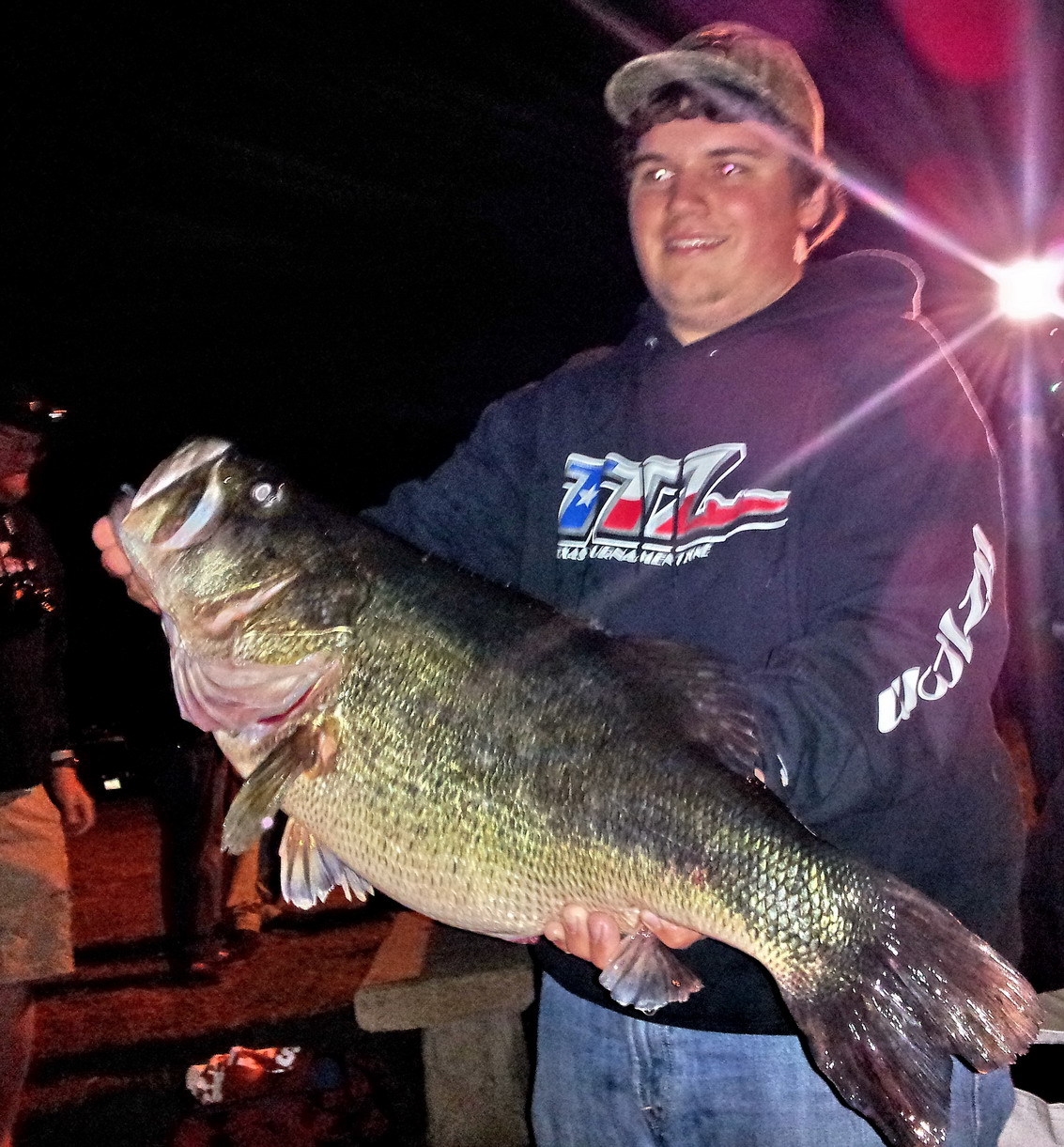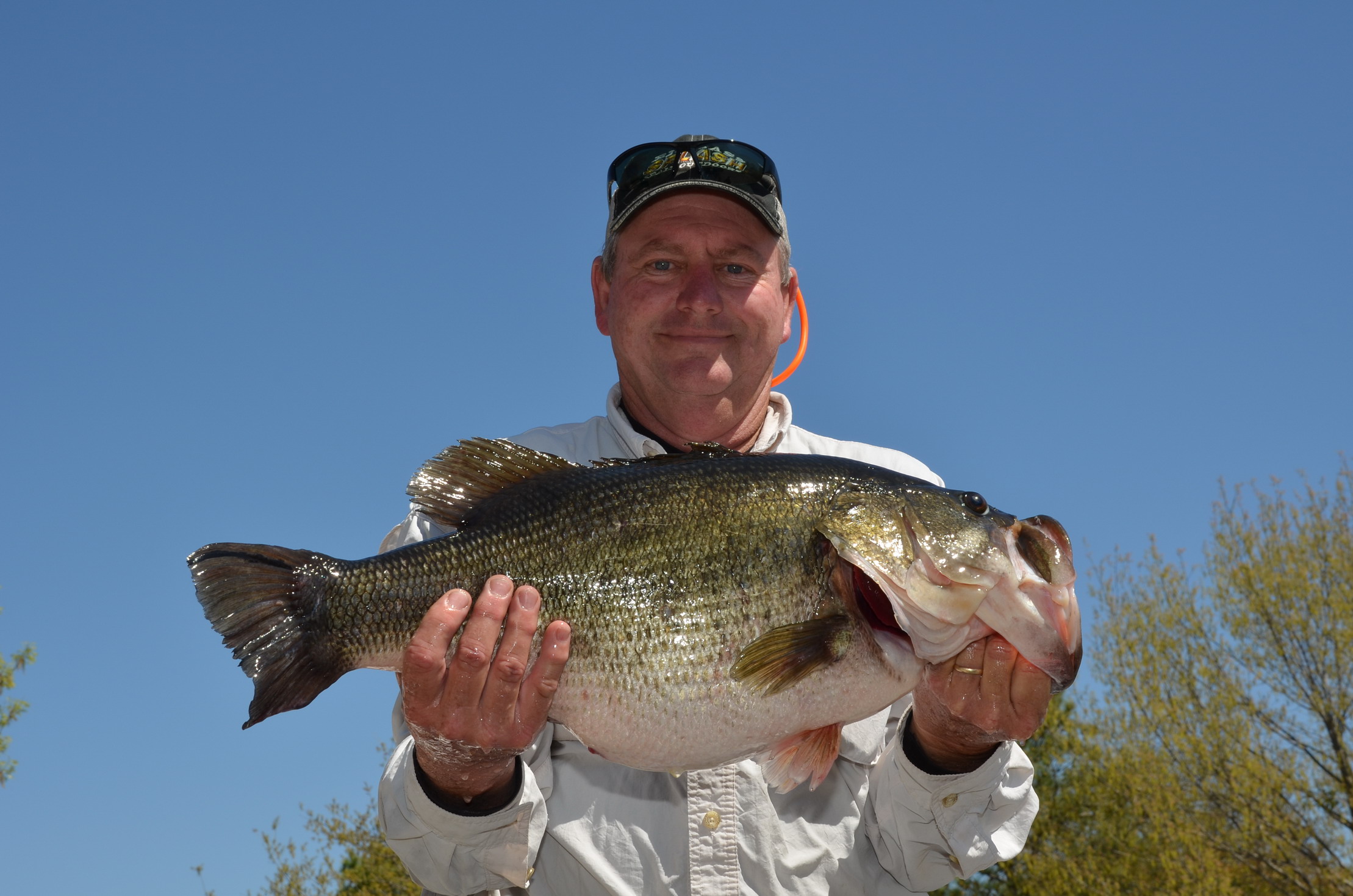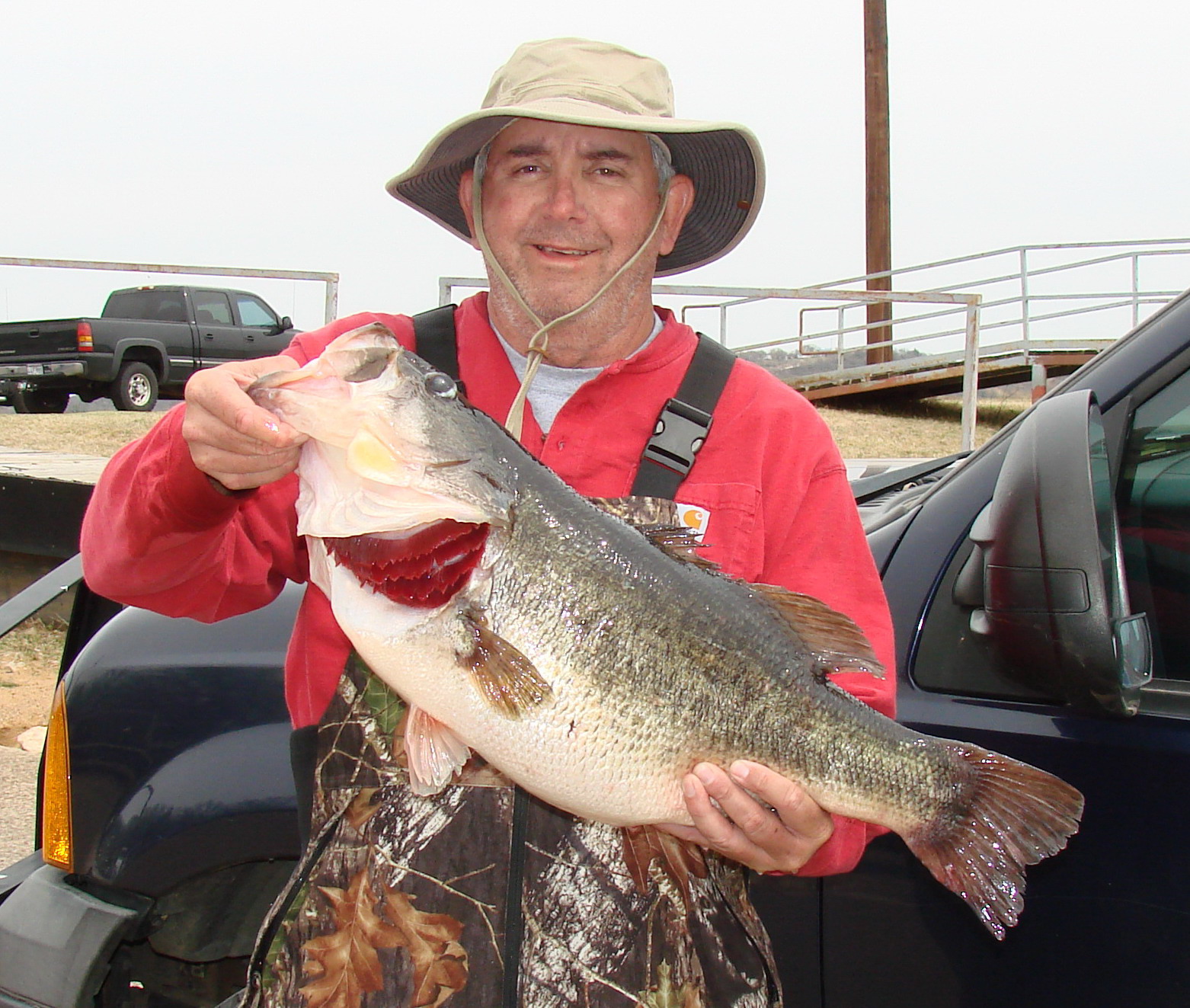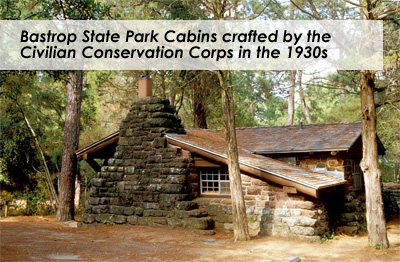April 4th, 2013

Colin Pack of Round Rock caught Toyota ShareLunker 548 from Lake Austin March 27, image by Nathan Reynolds, © Texas Parks and Wildlife Department
This is Passport to Texas
If you reel in a largemouth bass from Texas waters, and it weighs 13-pounds or more, donate it to the Toyota Sharelunker program through the end of the month; you’ll help spawn the next generation of big bass.
To donate a fish, handle it as little as possible, then…
Get a weight on it. If you have a set of scales that you feel like are close enough that you can actually say it’s a good enough weight to call us, weigh it and let us know.
David Campbell coordinated the program for 26 years before retiring in 2012. He explains what to do if you think you have a lunker, and want to donate it to the program.
We would like to have these fish in our possession in less than 12 hours. I realize sometimes if you’re on the other side of the state of Texas is may take me a few hours to get there. If you have to go somewhere and have that fish weighed, leave it in the water in aerated live well or whatever it is, try not to dry the fish off. If that fish weighs 13-pounds on a set of certified scales—whether it’s for business or whatever it is—give us a call as quick as possible. And we dispatch a vehicle; and take care of it until we get there. That’s the main thing.
Log onto the Texas parks and Wildlife website for more information.
That’s our show…with support from the Wildlife and Sport Fish restoration Program…providing funding for the Texas Freshwater Fisheries Center.
For Texas Parks and Wildlife…I’m Cecilia Nasti.
Posted in Fishing, Freshwater, SFWR | Comments Off on Angling: Donating Largemouth Bass
April 3rd, 2013

Donald Deville of Ville Platte, Louisiana, caught Toyota ShareLunker 547 from Lake Fork March 20, Larry D. Hodge, © Texas Parks and Wildlife Department
This is Passport to Texas
The Toyota ShareLunker program takes largemouth bass—13-pounds or more—and uses them to breed even bigger bass. By placing the males and females in the same tank, you’d think nature would take its course. It’s not that easy, says David Campbell.
04—It’s very hard to get these older fish to spawn in a strange environment.
Campbell retired from TPW in 2012, after 46 years with the agency, and 26 years managing the ShareLunker program. The bass donated to the program are ten years old or more, making their journey to the spawning tanks more stressful.
08—When you catch a thirteen-pound bass with a rod and reel, that’s not something you just reel in real quick and get it out of the water and put it in a live well—it usually takes some time, and it stresses the fish.
Music and dim lights work to calm humans and put them in the mood for romance. I asked, in jest, whether Campbell tried such mood enhancers with the bass.
11—(laughter) We haven’t tried it, but we have thought about it. (chuckles) We thought about a lot of this in the first few years of the program because we found it was extremely difficult to get them to spawn.
They’re doing something right, because they’ve stocked nearly a million fry in lakes from the Sharelunker program. Donating your catch to the program…that’s tomorrow.
The Sport Fish Restoration Program supports our series and provides funding for the Texas Freshwater Fisheries Center.
For Texas Parks and Wildlife…I’m Cecilia Nasti.
Posted in Fishing, Freshwater, SFWR | Comments Off on Angling: Breeding Bigger Bass
April 2nd, 2013

Johnny Spruiell of Iowa caught ShareLunker 546 , Cody Talley, © Texas Parks and Wildlife Department
This is Passport to Texas
Anglers know they can find big bass in Texas.
06—We have more big bass caught in Texas than anywhere I know of. I’m talking about anywhere in the United States or anywhere in the world.
From its inception in 1986, until he retired from Parks and Wildlife in 2012, David Campbell coordinated the bass spawning program at Parks and Wildlife, called the Toyota ShareLunker program.
17—I know there’s been some bigger fish caught in California, Florida—but it’s the numbers of big fish. And the anglers can go to almost any reservoir in the state of Texas and have the potential of catching a thirteen pound plus large-mouth bass. I don’t think that Anyone else can come close to that.
Anglers who reel in largemouth bass weighing 13-pounds or more are encouraged to donate their catch to the ShareLunker program. The donated bass enter into a spawning program, with the hope of creating faster growing, bigger bass.
11—We’ve had somewhere in the neighborhood of three quarter of a million fry from the sharelunkers through the years. We only had one year last year. We’ve had some years we didn’t have any spawn. Then some years we might have five, six or seven spawn.
The challenges of breeding bass in captivity…that’s tomorrow.
That’s our show for today…with support fro the Sport Fish Restoration Program…providing funding for the Texas Freshwater Fisheries Center in Athens…
For Texas Parks and Wildlife…I’m Cecilia Nasti.
Posted in Fishing, Freshwater, SFWR | Comments Off on Angling: The Sharelunker Program
April 1st, 2013

Bastrop State Park
This is Passport to Texas
The Civilian Conservation Corps, or the CCC, was fundamental in the development of the state and the national park systems. Our state park guide, Bryan Frazier, says this month we’re celebrating the program’s 80th anniversary.
56 –We’re doing a reunion and an anniversary honor for the 80th year of the CCC; it’s going to be at Palo Duro Canyon, April 6th and 7th. And so we’re putting out a call for someone who might know of someone or be related to someone who served in a CCC camp – we especially want you at this event. But the public is also invited. There will be displays of the craftsmanship of the CCC; American Youthworks will be there and they’ll do a demonstration of constructing a bench form a log, and they’ll show how the CCC worked by hand to build these amazing pieces of furniture and these amazing structures that still are in use today. Here in Texas we have 29 state parks that bear the signature of the CCC. April 8 & 7 at majestic Palo Duro Canyon in the Panhandle. We want people to come and enjoy that, and see what the CCC represented and the legacy that it has today.
Thanks, Bryan.
Find additional information at texasstateparks.org.
That’s our show for today…with funding provided by Chevrolet, supporting outdoor recreation in Texas; because there’s life to be done.
For Texas Parks and Wildlife…I’m Cecilia Nasti.
Posted in State Parks | Comments Off on State Parks: 80th Reunion of the CCC
March 29th, 2013

Sheryl Smith Rodgers
This is Passport to Texas
The article Nurturing Nature in the April issue of Texas Parks and Wildlife magazine, highlights the Texas Master Naturalist program.
07 – I just wanted to give readers a flavor of what Texas Master Naturalists are doing across the state.
What they are doing, says author, Sheryl Smith Rodgers, is increasing public awareness about the natural world in which they live.
20—You know, our state’s undergoing so much growth, and we’re losing so much of our natural ecosystems to subdivisions and shopping centers. People like master naturalists, who have more of an awareness of how important those elements are to our overall lifestyle, they’re going to share what they know with others and just raise awareness that we need to protect these areas.
Master Naturalists undergo weeks of training, says Smith Rodgers, who, herself, is a certified Master Naturalist.
25 – The classes cover geology, native grasses… Last spring I took my training from March into May. We went to different places. You don’t just sit in a classroom. You have field outings; you go out and actually look at the native grasses. We went to Jacob’s Well near Wimberley and talked about hydrology. You just cover a whole lot of different topics.
Once certified, citizens volunteer in their communities. There are more than 40 chapters statewide. Find more information on the TPW website.
The April issue of Texas Parks and Wildlife magazine with Sheryl Smith Rodgers’ article Nurturing Nature is on newsstands now.
For Texas Parks and Wildlife…I’m Cecilia Nasti.
Posted in Conservation | Comments Off on Conservation: Texas Master Naturalists, 2







 Passport to Texas is a
Passport to Texas is a  Passport to Texas is made available by:
Passport to Texas is made available by: